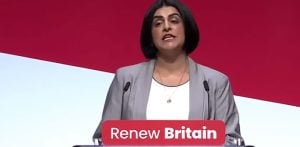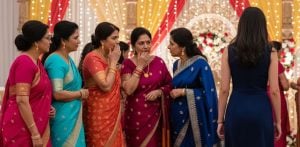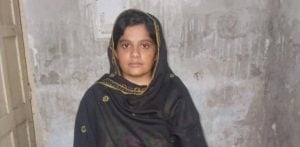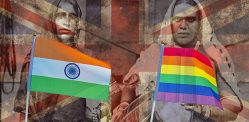"South Asian boys are taught not to talk about feelings."
The concept of masculinity in the British South Asian community is at a crossroads.
Generations of men grapple with conflicting expectations, whether it is traditional patriarchal norms, hyper-masculine stereotypes perpetuated by Western media or the rising tide of progressive gender discourse.
Netflix’s recent drama Adolescence has thrust this struggle into the spotlight, exposing how toxic masculinity radicalises young men and boys through online “manosphere” communities, leading to alienation and violence.
For British South Asian men, these pressures are compounded by cultural legacies that equate emotional suppression with strength and vulnerability with failure.
Conversations with community members and experts reveal a generation caught between preserving cultural identity and dismantling harmful norms.
We delve into toxic masculinity among British South Asian men, its manifestation in schools and media, and the pathways to healing.
The Cultural Roots of Toxic Masculinity

The British South Asian experience of masculinity cannot be separated from colonialism’s psychological scars.
Colonial rulers created strict gender roles by portraying South Asian men as either weak or violent to justify their control.
This duality persists today, manifesting in Desi communities where men are pressured to embody hyper-masculine traits to counter racial stereotypes while adhering to traditional roles as stoic providers.
As highlighted in a 2018 Reclamation Magazine article, South Asian boys are taught from childhood to avoid “crying like girls”, internalising the belief that emotional expression undermines their masculinity.
Education consultant Kishan Devani stated:
“From a young age, South Asian boys are taught not to talk about feelings. It’s not just discouraged – it’s mocked.”
On top of this are enduring caste hierarchies imported from the Indian subcontinent.
Upper-caste norms often equate honour with control, compelling many men to perform aggressive protectiveness, while lower-caste (Dalit) men face both racial prejudice and caste-based exclusion.
This intersection of caste and race not only exacerbates social inequalities but also contributes to divergent patterns of substance misuse and mental distress across caste lines.
In many British South Asian households, conservative religious authorities reinforce strict gender scripts.
Imams, pandits and granthis may alternately fortify or challenge toxic norms depending on whether they preach compassion or rigid binaries.
Yet some Muslim and Sikh communities have begun hosting men’s circles that integrate discussions of emotional wellbeing with faith practice, signalling a shift towards a compassion-based masculinity rooted in religious tradition.
The fusion of colonial trauma, caste rigidity and patriarchal norms has created a culture where vulnerability is stigmatised.
As 28-year-old Anam* says: “Men are seen as primary earners, while women are caregivers – a structure that leaves little room for emotional expression.”
This rigidity fuels mental health crises; South Asian men in the UK are 30% less likely to seek therapy than their white counterparts, often due to fears of emasculation.
Media, Radicalisation, and the “Manosphere”

Netflix’s Adolescence has ignited a national conversation about how online spaces radicalise young men into misogynistic ideologies.
While fictional, the show mirrors real-world trends: 45% of young males in the UK encounter “manosphere” content by age 14, according to a 2025 study by the Oasis Domestic Abuse Service.
These platforms glorify dominance and punish empathy, trapping young men and boys in a cycle of resentment and even dislike towards women.
For British South Asian boys, this radicalisation intersects with racialised stereotypes.
Online communities exploit insecurities stemming from media portrayals that depict Asian men as “either passive or aggressive – never fully human”, as noted in a Psychology Today analysis.
Meanwhile, influencers like Andrew Tate have fuelled this mindset and led some to replicate his ‘teachings’.
Mandeep* says:
“All the content I see online tells me I have to either fight for respect or be invisible. There’s no middle ground.”
Such dynamics are compounded by the “model minority” trope, which casts South Asians as uniformly industrious and resilient.
While superficially flattering, it imposes relentless performance demands, academic success, financial stability and stoicism, that mask the rising issue of toxic masculinity among young men who are unable to meet these standards.
Marketing professional Vaaswat explained how toxic masculinity permeates even sports:
“Footballers linked scoring goals to ‘hooking up with women’, normalising catcalling.”
This aligns with findings from the University of Huddersfield, which revealed that British South Asian men often adopt hyper-masculine personas to counteract societal emasculation.
The Role of Education

Schools are critical spaces where boys first encounter and internalise masculine ideals.
The UK’s recent mandate to screen Adolescence in secondary schools highlights the urgency of addressing toxic influences.
However, educators face an uphill battle.
Nick Gazzard, whose daughter Hollie was murdered in 2014, emphasises:
“Teachers must actively engage with these issues, not just show the series.”
Initiatives like Bold Voices, which facilitate gender-equality workshops, highlight the potential for change.
At St Dunstan’s College, students deconstruct figures like Andrew Tate, whose misogynistic rhetoric resonates with boys grappling with identity.
Jay, a 21-year-old artist, credited his father’s balanced assertiveness as a model but noted:
“Many misinterpret assertiveness as aggression.”
Without proactive education, schools risk perpetuating the harmful ideals they aim to dismantle.
Rizwan Hussain, a Birmingham-based youth worker, said:
“Some of these boys don’t know how to talk about anger without violence. If schools don’t show them another way, they’ll get it from TikTok.”
On Reddit, British South Asian boys share how they face dual pressures, as one wrote:
“We’re seen as either hyper-masculine ‘toxic f**k-boys’ or timid outsiders.”
This binary forces many into performative masculinity, exacerbating mental health struggles.
Mental Health & Suffering in Silence

The stigma around mental health in South Asian communities is well-documented.
Intergenerational trauma exacerbates this silence as Asad* recalled hiding swimming medals from his father for fear of criticism:
“I learned to internalise every achievement.”
This emotional suppression has dire consequences.
Drishya explains: “Patriarchal masculinity limits men’s ability to love and connect.”
The pressure to conform manifests in substance abuse, gambling and domestic violence.
Vaaswat says: “Men are conditioned to shut up and take it until they break. I’ve seen it break friends.”
In one UK study, middle-aged Pakistani men reported significantly higher rates of depression and anxiety compared to similarly aged White men, even after adjusting for socioeconomic factors.
Yet such statistics remain buried beneath the “model minority” façade, discouraging help-seeking and perpetuating silent suffering.
Psychologist Dr Ranjan Chatterjee explained: “We’re seeing South Asian men presenting with symptoms of depression or anxiety but calling it ‘tiredness’ or ‘pressure’.
“They don’t always have the language to describe what they feel.”
The University of Huddersfield’s research offers a counter-narrative: British South Asian men like Asad, who prioritised caregiving for his terminally ill mother over career ambitions, demonstrate that empathy and strength can coexist.
However, such stories remain exceptions in a culture that equates masculinity with emotional detachment.
Pathways to Healing

Breaking the cycle requires systemic and grassroots efforts.
Mental health advocate Ravi Taneja stresses the need for “safe spaces where men can express vulnerability without judgment”.
Organisations like the South Asian Mental Health Initiative (SAMHI) now offer male-focused support groups, blending cultural sensitivity with psychological care.
Parents also play a pivotal role.
Asad argues for “parental licensure” to curb toxic upbringing:
“Why do we need tests to drive but not to raise children?”
Meanwhile, younger generations are challenging norms through allyship.
Dev* advocates for restricted internet access and queer-inclusive education: “Without questioning, I’d have fallen into the alt-right pipeline.”
Meanwhile, university student Amir* admitted:
“I only realised how trapped I was in that ‘provider-first’ mentality when my girlfriend pointed out I’d never said ‘I’m sad’. That shook me.”
Reddit users highlight the importance of redefining success, as one said:
“We need to celebrate men who prioritise emotional intelligence over financial status.”
The Huddersfield study echoes this, showcasing men who redefine masculinity through caregiving and community leadership
Toxic masculinity among British South Asian men is a product of historical trauma, cultural rigidity, and systemic neglect.
Adolescence serves as both a warning and a catalyst, exposing the deadly consequences of inaction.
Schools must integrate gender-critical curricula, parents must foster emotional literacy, and men must embrace vulnerability as strength.
The path forward demands courage, compassion, and a reckoning with the past to forge a future where masculinity is defined not by dominance but by humanity.
The University of Huddersfield’s findings offer hope: British South Asian men like Asad Ajaz, who transformed caregiving into an act of love, prove that redefining masculinity is not only possible, it’s already happening.





























































